Your cart is currently empty!
Mind Games: How Politicians Use Conspiracies to Control Us
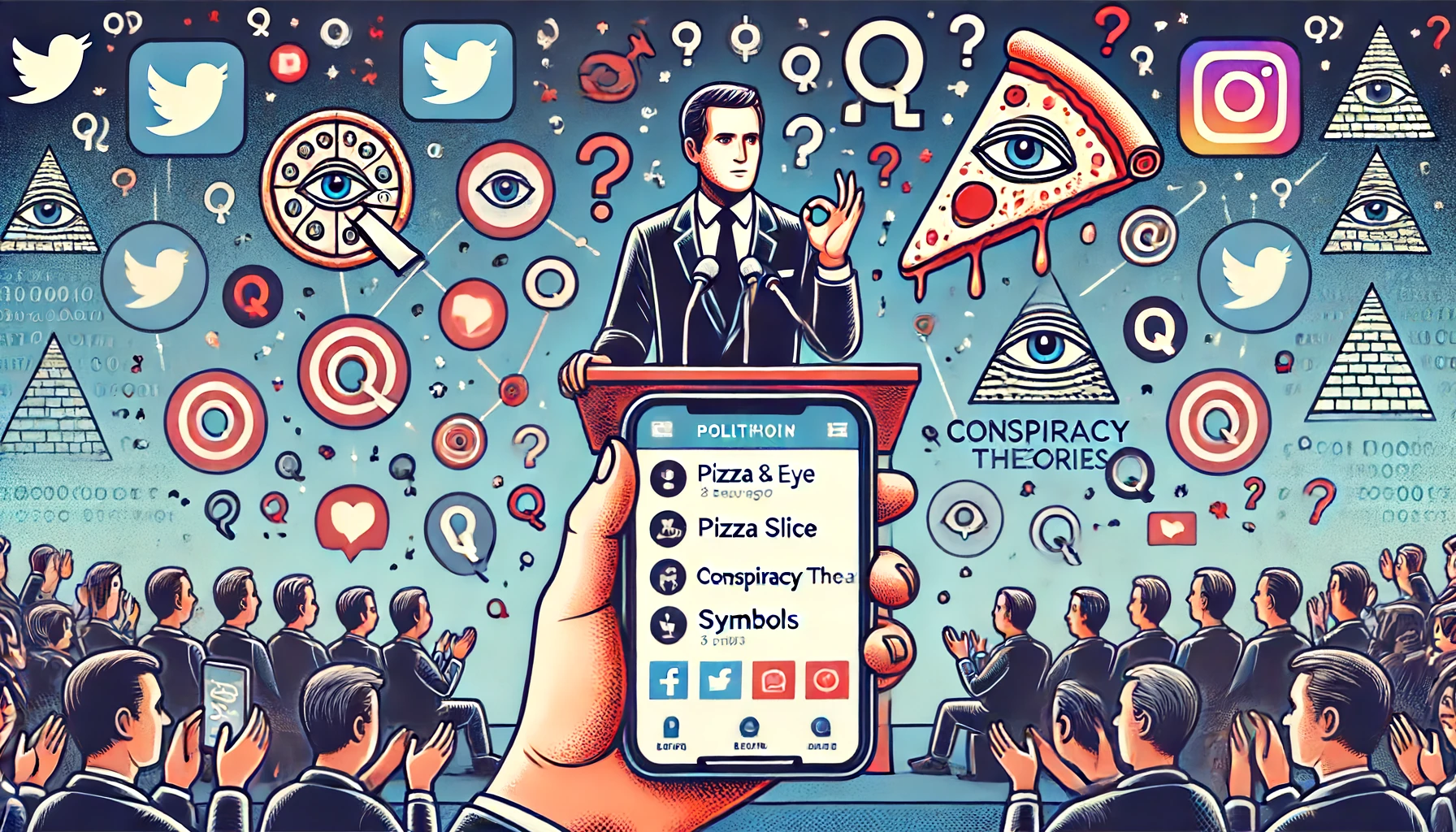

Political Deception Exposed
Welcome, dear readers, to the high-stakes game of modern politics, where the rules are murky, and the truth is often the first casualty. Today, we’re diving into the murky waters of how politicians use conspiracy theories to manipulate public opinion. If you’ve ever felt like you’re caught in an endless maze of misinformation, you’re not alone. The political landscape has become a battleground where facts are twisted, and reality is reshaped to serve specific agendas.
In the age of “fake news” and alternative facts, understanding how and why politicians employ conspiracy theories is not just relevant; it’s essential. As we approach the upcoming election, it’s crucial to dissect these tactics and recognize them for what they truly are: manipulative tools designed to confuse, divide, and control.
Why resort to such underhanded methods? The answer is straightforward. Conspiracy theories are the Swiss Army knife of political strategy—they can be adapted to fit any narrative, discredit opponents, and galvanize supporters. They’re like the junk food of political discourse—tempting, addictive, and often lacking in substance.
In this article, we’ll explore the dark art of political conspiracy theories, examining both historical and contemporary examples. From the bizarre claims of the QAnon movement to the persistent myths of election fraud, we’ll uncover how these narratives are crafted, spread, and—most importantly—how they influence public opinion.
So, buckle up and prepare for a deep dive into the world of political manipulation. This journey through the tangled web of conspiracy theories will be as enlightening as it is alarming. And remember, in the complex game of politics, those who control the narrative often hold the power.
Manipulating Public Opinion
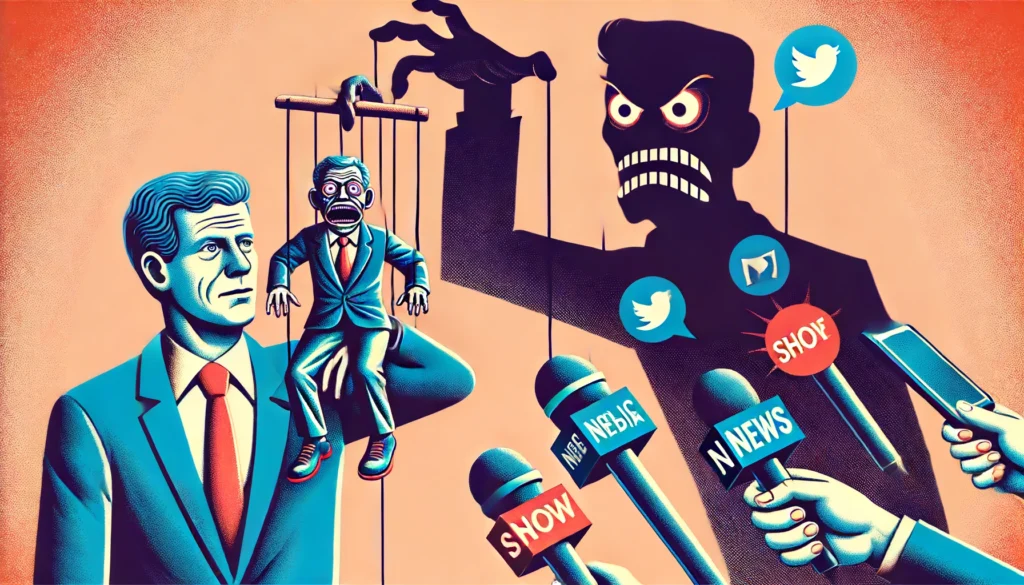
Now that we’ve set the stage, let’s dive into the nitty-gritty of how politicians use conspiracy theories to manipulate public opinion. Spoiler alert: it’s a masterclass in psychological manipulation, playing on our deepest fears and the human desire for simple explanations to complex problems.
Tapping into Fears and Uncertainties
Politicians have a knack for tapping into public fears and uncertainties, exploiting them to rally support, distract from scandals, or discredit opponents. Think of conspiracy theories as the boogeyman of the political world—scary, omnipresent, and incredibly effective at keeping people up at night.
Historically, this tactic has been employed with ruthless efficiency. Take McCarthyism, for instance. Senator Joseph McCarthy’s witch hunt for communists in the 1950s played on American fears of communist infiltration during the Cold War. By promoting the idea that communists were lurking around every corner, McCarthy was able to consolidate power and silence critics.
Another classic example is the Watergate scandal. When President Nixon’s administration was embroiled in scandal, various conspiracy theories were floated to muddy the waters and divert attention. The idea was to create so much confusion that the public wouldn’t know what to believe.
In modern times, the Pizzagate conspiracy theory—claiming that a child trafficking ring was being run out of a Washington D.C. pizzeria—demonstrates how these tactics are still in play. Despite being thoroughly debunked, the pizza myth stirred up significant fear and paranoia, showcasing the power of such unfounded theories.
Simplifying Complex Issues
Conspiracy theories are particularly effective because they simplify complex issues, making them more digestible for the general public. Politics is complicated, and not everyone has the time or inclination to dive into the minutiae of policy and governance. Conspiracy theories, with their clear villains and straightforward narratives, provide a convenient shortcut to understanding.
Take the rise of QAnon, for example. This sprawling conspiracy theory posits that a secret cabal of pedophiles and satanic worshipers controls global politics. It’s a fantastical explanation that, for some, makes more sense than the messy reality of political systems and human behavior. QAnon has been endorsed by various political figures, further cementing its place in public discourse and illustrating how simple (if absurd) narratives can gain traction.
Historical Examples
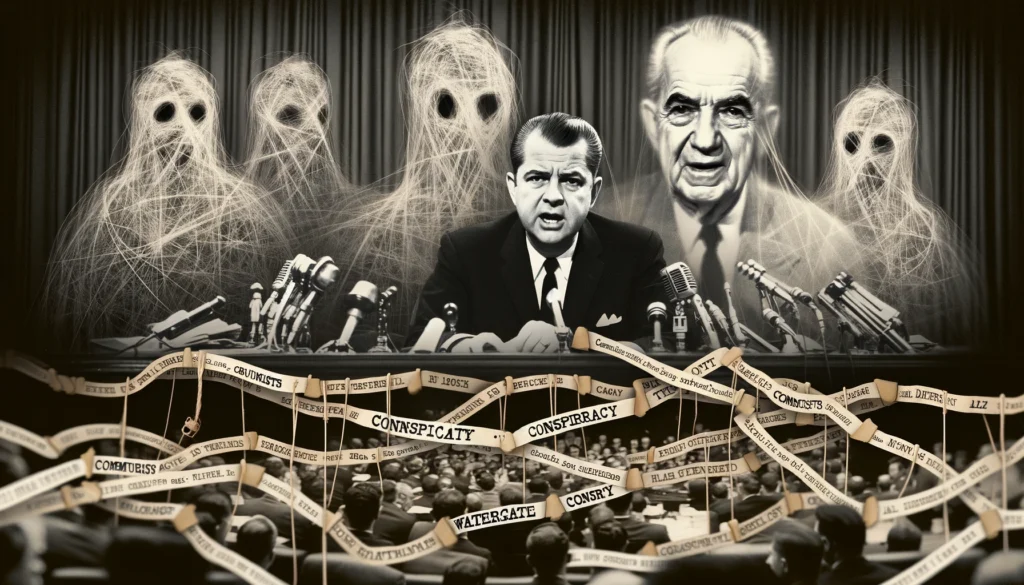
Let’s dig deeper into some historical examples that illustrate how conspiracy theories have been weaponized in politics:
- McCarthyism: In the early 1950s, Senator Joseph McCarthy tapped into the widespread fear of communism to launch a series of investigations and accusations, claiming that the U.S. government and other institutions were infiltrated by communists. This led to a nationwide paranoia, ruined careers, and a culture of fear and suspicion.
- Watergate Scandal: During the Nixon administration, conspiracy theories were used to deflect blame and confuse the public about the true extent of the scandal. Nixon’s aides and supporters propagated various theories to suggest that the accusations against him were politically motivated, thereby attempting to maintain public support despite growing evidence of wrongdoing.
Contemporary Examples

Moving to the present, conspiracy theories continue to be a powerful tool in the political arsenal:
- Pizzagate: This conspiracy theory emerged during the 2016 U.S. presidential election, falsely alleging that a child trafficking ring involving high-profile Democrats was operating out of a pizzeria. Despite being debunked, it led to real-world consequences, including a shooting at the pizzeria. The theory was propagated by various media outlets and political figures to discredit opponents and galvanize a particular voter base.
- QAnon: This modern conspiracy theory claims that a group of Satan-worshipping pedophiles controls the world, and that former President Trump was working to expose and defeat them. Despite its outlandish claims, this dangerous conspiracy theory has gained a substantial following, with some politicians even endorsing it. The theory has had significant impacts, including influencing voting behavior and inciting violence.
It’s clear that conspiracy theories are more than just fringe beliefs—they are strategic tools used by politicians to manipulate public opinion. Whether it’s to create fear, simplify complex issues, or distract from scandals, these theories serve to control the narrative and, ultimately, influence voter behavior.
Impact on Democracy and Rational Discourse
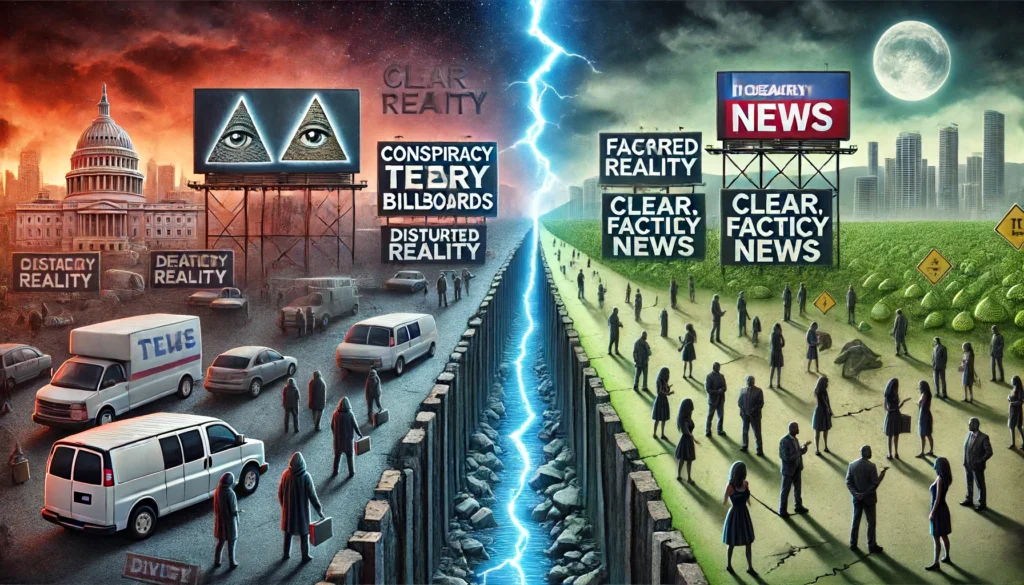
Alright, folks, it’s time to roll up our sleeves and dig into the real meat of the matter: how conspiracy theories wreak havoc on democracy and rational discourse. Think of it as a political horror show where trust is the first victim, and rational thought is the hapless sidekick, perpetually in danger.
Undermining Trust
First off, conspiracy theories are like termites gnawing away at the foundations of democratic institutions and processes. When politicians endorse or propagate these ideas, they aren’t just indulging in a bit of harmless fantasy—they’re actively undermining the credibility of elections, the judiciary, and the media. This erosion of trust has profound consequences.
Take the persistent claims of widespread voter fraud during the 2020 U.S. presidential election. Despite (losing 60 court cases!) a lack of evidence, these claims were promoted by various political figures, leading to a significant portion of the electorate doubting the legitimacy of the election results. This not only fueled the January 6th Capitol riot but also sowed long-term seeds of distrust in the electoral process.
Another historical example is the Red Scare and McCarthyism. Senator Joseph McCarthy’s baseless accusations of communist infiltration within the U.S. government led to widespread paranoia and mistrust in public institutions during the 1950s. Careers were ruined, lives were disrupted, and the public’s faith in their government took a serious hit.
When trust in these pillars of democracy is undermined, the result is increased political polarization and instability. People retreat into echo chambers, fortified by partisan media that amplifies these conspiracy theories, creating a cycle of distrust and division that’s hard to break.
Distorting Reality
If eroding trust wasn’t bad enough, conspiracy theories also have a knack for distorting reality. They twist facts and weave false narratives that make it difficult for the public to discern truth from fiction. This distortion hampers rational discourse and informed decision-making, both of which are essential for a healthy democracy.
For instance, the conspiracy theory that the COVID-19 vaccine contains microchips used to track individuals is not only patently false but also dangerously misleading. This narrative has been propagated by certain political figures and media outlets, leading to vaccine hesitancy and undermining public health efforts.
In the past, we’ve seen similar distortions with the 9/11 truther movement. This theory suggested that the U.S. government was involved in the 9/11 attacks, a claim that has been thoroughly debunked yet persists in certain circles. Such theories create a parallel reality where facts are malleable, and truth is whatever the loudest voice in the room says it is.
The difficulty for the public to discern truth from fiction due to these distortions creates an environment where rational discourse is stifled. People become more susceptible to simplistic explanations for complex issues, and political debates are reduced to shouting matches over baseless claims rather than meaningful discussions about policy and governance.
Historical examples abound. The Watergate scandal, for example, saw various conspiracy theories floated to distract from the actual criminal activities of Nixon’s administration. These theories muddied the waters, making it challenging for the public to understand the true extent of the corruption until the evidence was overwhelming.
In contemporary politics, QAnon provides a stark illustration of how deeply entrenched conspiracy theories can become. This sprawling theory has captivated a significant number of people with its outlandish claims about a secret cabal controlling world events. The endorsement of QAnon by certain politicians has only legitimized these false narratives, making it even harder for adherents to separate fact from fiction.
By promoting these false narratives, politicians distort reality and make it nearly impossible for rational discourse to thrive. In such an environment, informed decision-making is a Herculean task, and the quality of democratic engagement deteriorates.
Stay tuned as we continue to unravel how these tactics affect our political landscape and explore ways to combat their pernicious influence. The battle for truth and rationality is ongoing, and it’s one we can’t afford to lose.
Call for Critical Thinking and Skepticism
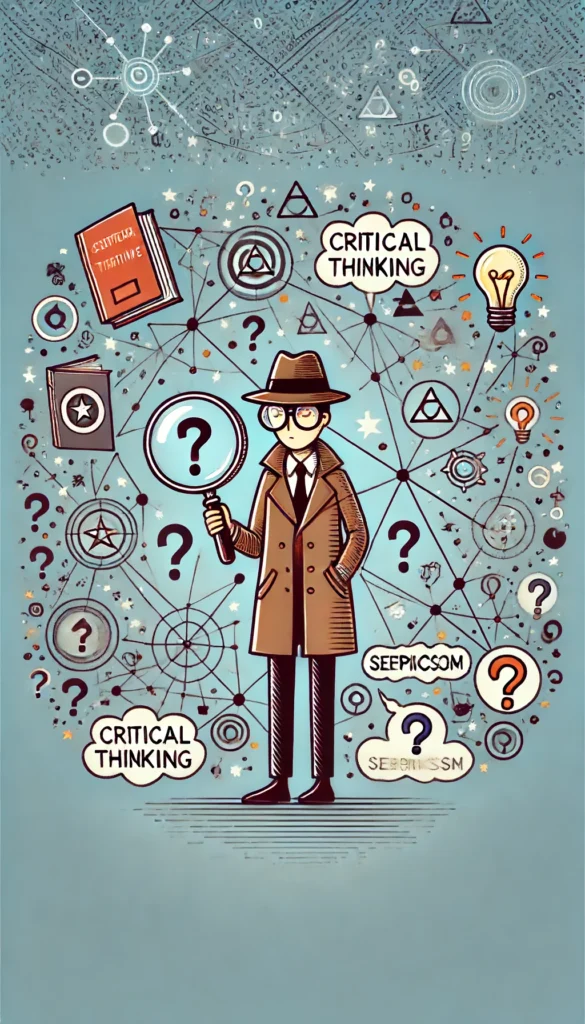
Alright, folks, let’s get serious for a moment. We’ve explored how conspiracy theories can undermine democracy and distort reality. Now, it’s time to talk about what we can do about it. Spoiler alert: the answer lies in critical thinking and a healthy dose of skepticism.
The Importance of Skepticism
In an age where misinformation spreads faster than a cat video on social media, skepticism is not just a good habit; it’s a necessity. We need to question everything, especially when it comes from politicians who have a vested interest in swaying public opinion. By fostering a skeptical mindset, we can better navigate the murky waters of political rhetoric and avoid falling prey to manipulative tactics.
Questioning Sources
One of the most effective ways to combat the spread of conspiracy theories is to always question the source. Is the information coming from a reputable outlet? Is there evidence to back up the claims? Remember, just because something is trending on Twitter doesn’t mean it’s true. Take the time to dig deeper, seek multiple perspectives, and look for credible evidence. If something sounds too outrageous to be true, it probably is.
The Absurdity of Conspiracy Theories
Let’s be honest—some conspiracy theories are downright ridiculous. From flat earth theories to lizard people running the government, the absurdity knows no bounds. Yet, these theories gain traction, reminding us of the power of misinformation. For example, the theory that the moon landing was faked persists despite overwhelming evidence to the contrary. These outlandish claims highlight the need for critical thinking and skepticism in debunking such myths.
Building Resilience
Fostering a culture of skepticism and critical thinking can build resilience against the manipulation tactics of politicians. By encouraging people to question and seek evidence, we can create a more informed and rational public discourse. This isn’t just about protecting ourselves from false information; it’s about strengthening our democratic processes and ensuring that our decisions are based on facts, not fiction.
Strengthening Democracy
Ultimately, promoting skepticism and critical thinking is about more than just debunking conspiracy theories. It’s about strengthening democracy itself. A well-informed electorate is the cornerstone of a healthy democracy. By demanding evidence and questioning narratives, we can hold our leaders accountable and make more informed decisions at the ballot box.
So, next time you come across a sensational headline or a too-good-to-be-true story, take a moment to question it. Engage in discussions, seek out credible sources, and foster a healthy skepticism. By doing so, we can combat the spread of misinformation, promote rational discourse, and build a stronger, more resilient democracy.
Stay tuned as we wrap up our discussion with a powerful conclusion that ties everything together and leaves you with actionable steps to navigate the complex world of political rhetoric. Remember, in the battle against misinformation, critical thinking is our greatest weapon.
Conclusion
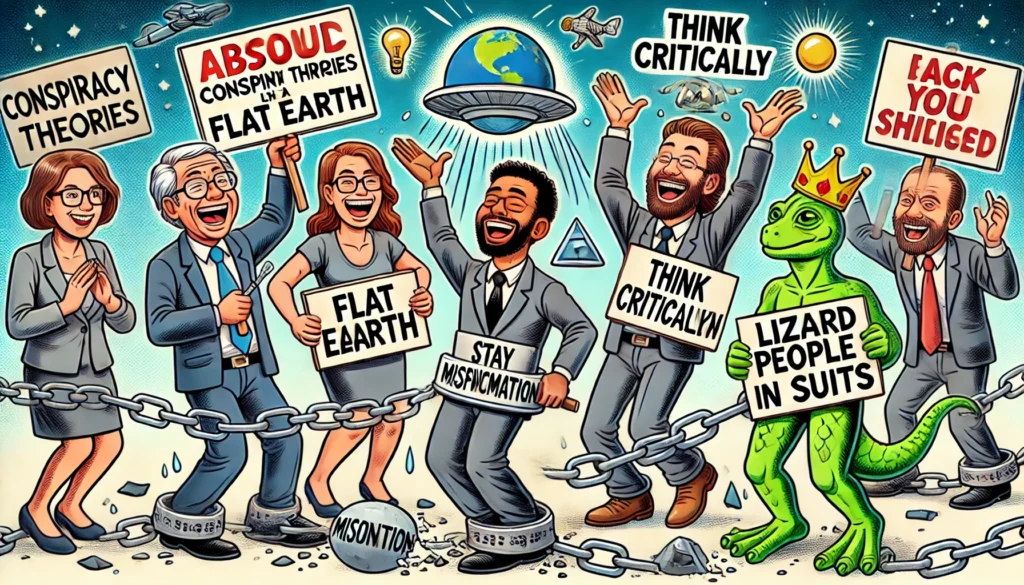
As we wrap up this deep dive into the tangled web of political conspiracy theories, it’s clear that the relationship between politicians and these manipulative tactics is both dangerous and deeply ingrained. By understanding this relationship, we can better appreciate the significant implications for democracy and rational discourse.
The Dangerous Dance Between Politicians and Conspiracy Theories
Politicians have long used conspiracy theories as tools to sway public opinion, tap into fears, and provide simple explanations for complex issues. From McCarthyism’s red-baiting hysteria to the modern-day madness of QAnon, these tactics have sown distrust, polarized societies, and distorted reality. The persistent claims of election fraud, for instance, have undermined trust in democratic institutions and processes, leading to increased political instability and division.
Laughing at the Ludicrous
Humor can be a powerful weapon against the absurdity of conspiracy theories. By shining a light on the ridiculousness of some claims—like the idea that the moon landing was faked or that lizard people run the government—we can expose these theories for what they are: far-fetched fantasies designed to manipulate and control. This approach not only debunks the myths but also makes the tactics less effective by reducing their credibility.
Stay Sharp, Stay Skeptical
In this age of misinformation, our best defense is a vigilant, critically-thinking public. Question everything, especially when it comes from sources with a vested interest in swaying your opinion. Seek out evidence, cross-check information, and be wary of narratives that seem too simple to explain complex issues. This skepticism isn’t about being cynical; it’s about being informed and resilient against manipulation.
By fostering a culture of critical thinking and skepticism, we can build a more resilient society. This not only strengthens our democracy but also promotes a more informed and rational public discourse. It’s about ensuring that our decisions, especially at the ballot box, are based on facts, not fiction.
In conclusion, the battle against conspiracy theories is ongoing. But with a commitment to skepticism, critical thinking, and a touch of humor, we can combat the spread of misinformation and safeguard the integrity of our democratic institutions. Remember, the truth is out there—we just have to be willing to look for it.
Thank you for joining us on this journey through the murky waters of political conspiracy theories. Stay vigilant, stay informed, and never stop seeking the truth.
Donate to Joe Biden’s Campaign
- Official Campaign Website: Joe Biden for President
- ActBlue Donation Page: Donate via ActBlue
- Biden Victory Fund: Donate By Mail
Further Reading on Political Manipulation and Conspiracy Theories
- POLITICO: Covers how conspiracy theories impact politics and public opinion, highlighting specific examples and the role of social media.
- South Florida Reporter: Analyzes the influence of conspiracy theories on the 2024 US elections and public opinion.
- Oddspedia: Discusses the prevalence and impact of conspiracy theories on voter perceptions and electoral dynamics.
- Phys.org: Provides insights into the psychology of conspiracy beliefs and the role of misinformation.